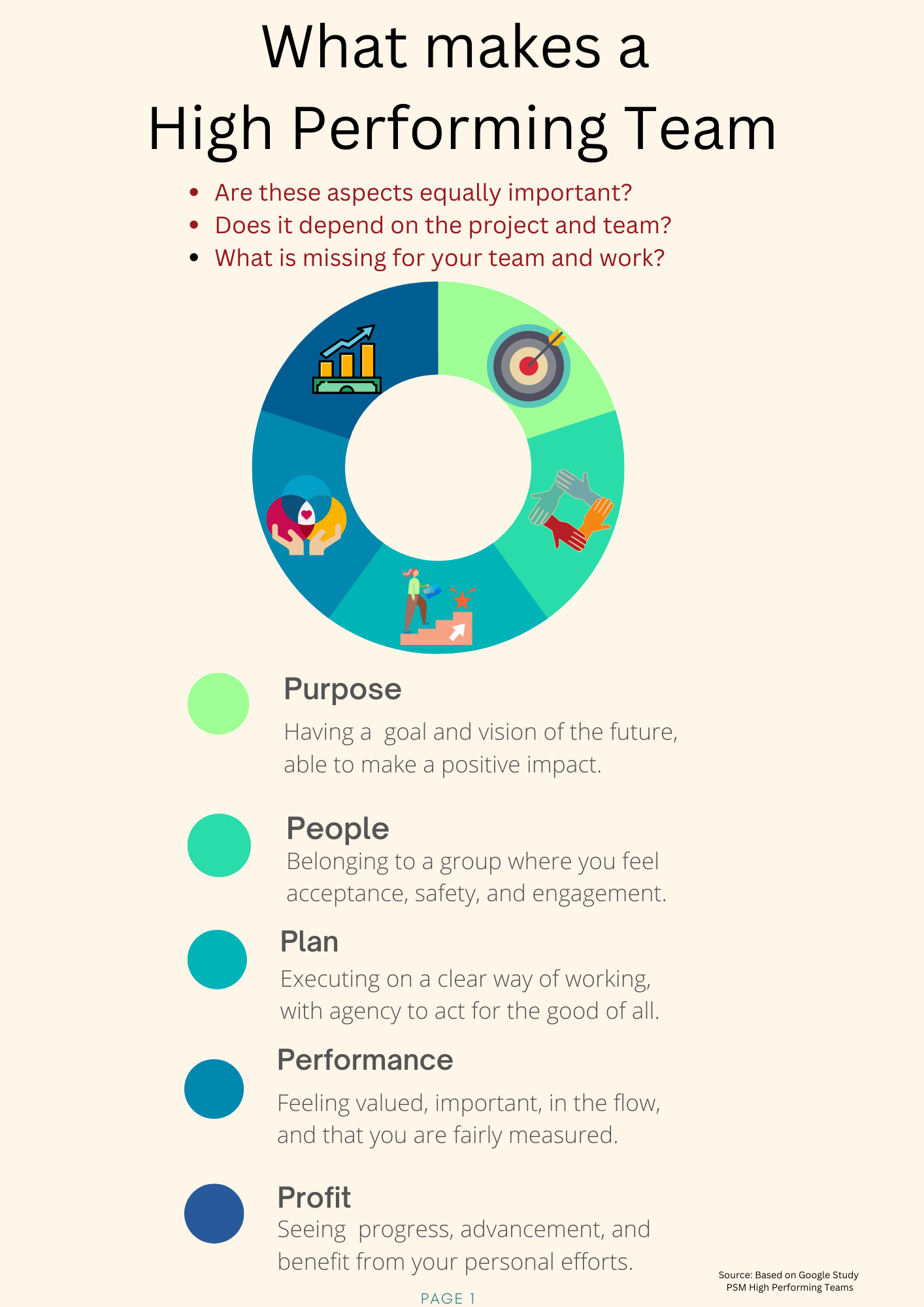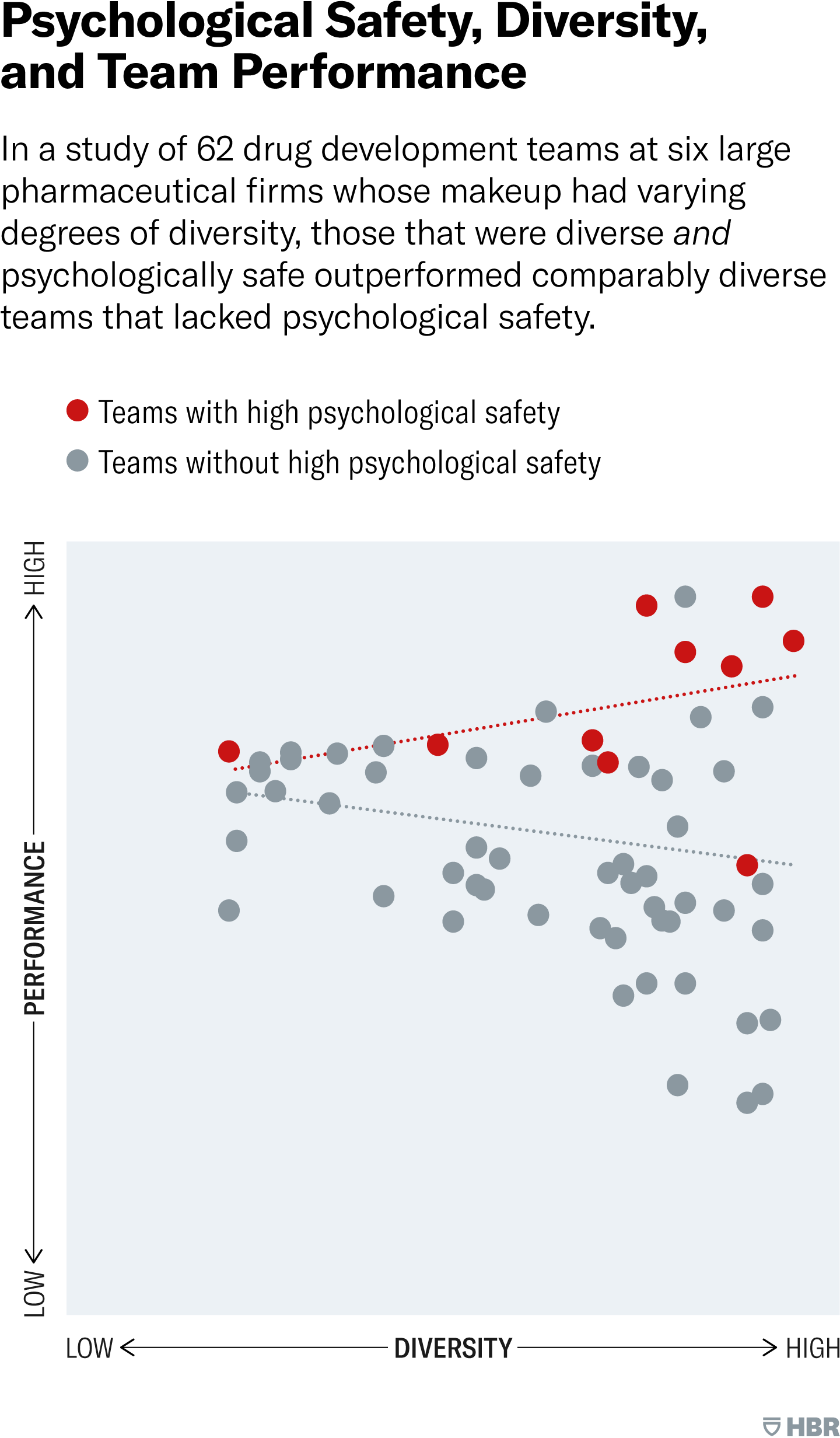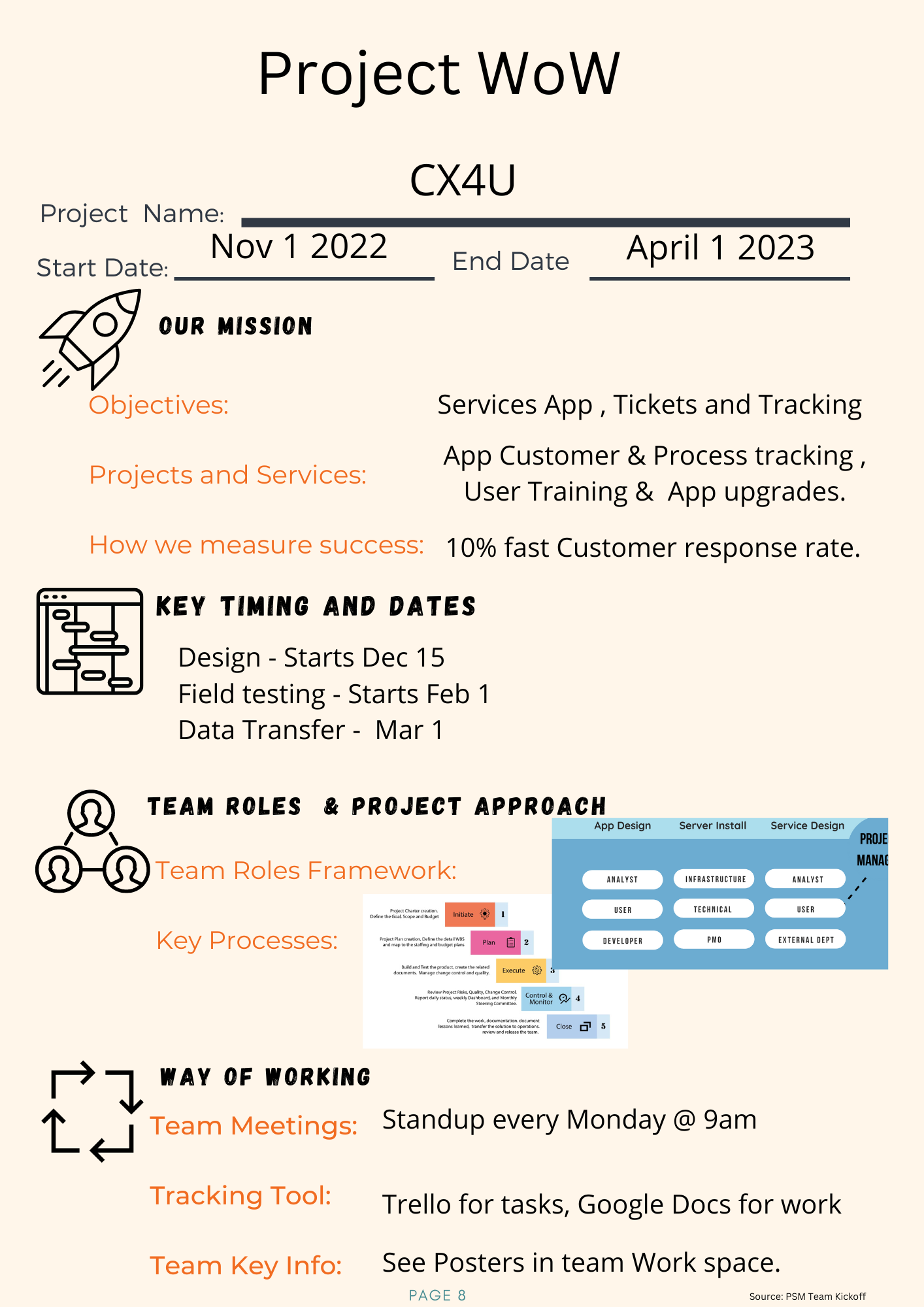What High-Performing Teams will do Differently in 2024
Managers and Leaders have a mission - to create a team capable of working in the flow - creating amazing solutions for their customers. To do that, managers must focus on building skills and capabilities and the next generation of leaders along the way.
Google and Harvard Business Review have studied what high-performing teams do differently. In this article, we will review what these studies say and, more importantly, how managers can put these ideas into practice in the rapidly changing landscape of 2023.
Attributes of High-Performing Teams
Purpose
People
Plan
Performance
Profit
We know that teams and what is expected of them have gone through highs and lows of management, isolation, and revolution of technology enablement. Now we see that diverse and remote work along with changes to demographics and intergenerational teams, will continue to push the boundaries in our ways of working. But more than that, Project Managers are being asked to learn more, do more, and understand interpersonal skills more than ever before.
How can you have the skills you need to build or be a member of a team that is in the flow and sees the benefit of their efforts in promotions and raises?
Download my free Workbook for Building High-Performing Teams
In 2021, I wrote about 5 steps to make your team Great. But for 2023 I wanted to provide a practical tool to take you through the concepts and practice the processes that matter. This will allow you to learn and fine-tune your leadership and team-building skills. Learn to encourage, engage and challenge your staff to reach their optimum performance as individuals and as a team.
I take you through Concepts of the 5 Attributes with examples, give you a process to work through, and a place to document your lessons learned and points to take forward.
Google's Insights into Team Performance
Google's People Operations department has scrutinized everything about how teams are formed and performed. Google management has had several ideas about how teams become high performing over the years - but it was just guesswork - not proven. For the past several years, Google has invested in understanding high-performing team dynamics and coming up with 5 aspects of what makes teams work.
They used data to drill down on years of academic research and their own in-house questions to discover the magic bullet.
What they found surprised them. It was not the smartest teams that did the best. It was the teams that treated each other the best.
Google conducted a two-year study and concluded that high-performing teams have five specific traits:
Psychological safety: The willingness to take risks without feeling insecure or embarrassed.
Dependability: Delivering high-quality work on time.
Structure & clarity: Clarity of goals, roles, and execution plans.
Meaning of work: The purpose of their work is important to team members.
Impact of work: Making a positive difference in the lives of others.
The researchers eventually concluded that what distinguished the "good" teams from the dysfunctional groups was how teammates treated one another.
NY Times, What Google Learned From Its Quest to Build the Perfect Team
HBR's 3 key Research Findings
1. Leaders can increase employee engagement.
It does not take a expert to see that engaged employees do better, but the question remains, how to provide the right environment that will engage your team members in a way that resonates with them.
Recognizing employees for the good work they do is a critical leadership skill – and has an impact on morale, productivity, performance, retention, and even customer satisfaction.
2. Teams that feel safe do better.
When team members feel they can ask, question, try and even fail without fear of penalties, they flourish. When people are allowed to be their authentic selves at work, they are at their best. When personal and psychological safety are protected, people can focus on what makes them great at their jobs. Managers need to do better to provide this kind of safety to their teams. Even when it means standing between their team and the corporate bullies, unreasonable customers and senior management that has no idea what it is like to be on the front lines of a project.
Psychological safety appears to help teams realize the potential of diversity for both performance and well-being.
3. Trust Matters.
Team members need to learn to have each other backs. Managers should encourage team members that help others. Learning to support each other can have long lasting impact to the teams ability to work with stress and forgive each other for mistakes. Trust is about being human at work. Managers can lead by example through trusting others and showing vulnerability, not hiding it.
The cost of inauthenticity of team members impacts the performance of diverse teams.HBR, Begin with Trust
So we may understand the secret of success in the finding from Google, HBR and others. But how, can Managers, practically, learn to build stronger teams?
The Managers Workbook to High-Performing Teams
This 18 page Workbook is free for your use. Here I will take you through some of the basics, but there is more content available on this channel to help you with other aspects of these points. Links to that content is included in the summary below.
Define the Teams Reason for being
Understanding the 'why' of what we do is key to our engagement. Everyone needs a sense of purpose in life and work. Review the business case when defining the story of your project's purpose. Every team member needs to have an elevator pitch for how their project contributes value to the company. This helps team members share the project message and increase pride in their work. No one wants to put in the hard work needed for a project without understanding the importance of the outcome.
Good managers share the message with their team and foster a sense of ownership for each team member. But great managers go one step further: they connect individual team member's contributions to the end product.
Using the Team Vision Board helps to make that connection. It also keeps focusing on the outcome of the teams within the project. And it creates a narrative so the team, customers, and visitors can see how the parts fit into the whole.
A key way to communicate purpose is storytelling, see this link for more information about how to tell a compelling business story.
Build a way of working that leverages the teams diversity
Projects can only succeed with the right people, skills, and collaborative community. But organizations that have looked at high-performing teams understand that managers must do more than staff the project correctly. They need to understand their teams, what they need and how to create a group of skilled employees into a community focused on the outcome while having each other's back.
If you want to understand more about natural roles click here. For more on team structure click here.
When working to ensure you have set your people up for success, use the Workbook to assess:
Are the needs of the group and individuals being met?
What is the optimum approach to your way of working to get the best from everyone and let each person feel safe and have the freedom to work in a way that suits them?
What is the culture of the team, project, and organization? How is the project leveraging the diversity of the team as a strength? This is more obvious when multiple countries or cultures are involved, but think about the culture of types of people and work as well. Also, consider the impact of multi-generational teams and gender diversity. Diversity is a strength when managed well and a weakness when managed poorly.
Create a simple project summary
Planning is often considered a key job for the Project Manager and the Project Office. This is often the most efficient use of time and effort. However, it is often not the most effective. Team planning for the project can take a bit more time. However, reviewing the project approach, key milestones, tasks, roles, and responsibilities can increase team understanding, buy-in, and alignment, saving hours of meetings from getting everyone on the same page. Use the Workbook Project WOW page to provide the big lines of the project for the team at kick-off or a milestone, but then let the team work through the ways of working and planning to build an approach that makes sense for the team and the project outcome.
Provide templates and strawman models to save time, but ask the team for feedback to fine-tune the details of project meetings, formats, and status collection processes. Have various team members act as advocates for parts of the process during the review so that the Project Manager can coach and advise, versus command and control. This will build on the 'people' work you have done earlier with the team.
Project Kick-offs or onboarding is key to engagement. But you can also use similar approaches during milestone meetings. Get more details on team alignment here.
Make performance expectations
transparent
Be transparent and open about sharing how the project will be measured. Everyone on the team should have a general idea of status, when and how it is reported, and how issues are addressed.
This is important for owners of the outcome. Still, also it is key to link the work on the project and the outcome of the solution to the individual contribution of the team members during their performance feedback. Also, be mindful of Simon Sinek's point about your work and what you do. Your goal is to create a high-performing team, not just a team with ‘stars’ in it. High-performing teams value everyone on the team for their unique skills. In addition, they know that performance is about attitude and collaboration as much a result of the project as the final product.
Google, EuroFound, and Harvard Business Review findings all show in studies based on data that high-performing prima donnas are less valuable than teams of mid-level performers who are truly collaborative, helpful, and respectful. Use the Workbook to ensure you share the results of the team's and individual performance.
Coaching is one of the things that should be done for team members who need performance improvement and those who are high performing. This can be combined by allowing future leaders to coach others and build their leadership skills.
The Workbook has some samples of the coaching content I like to use on my projects. However, you can get my full Mentoring Workbook here.
Understand what’s in it for Team members
Would you work for free at your current job? No, well then, like most people, you need to be valued at work. That includes positive feedback, coaching and promotion, pay, and other rewards.
Managers need to be aware of what they can do directly and indirectly.
Something most project managers have within their scope of work is performance reviews. Linking the project reviews to the annual salary and promotion assessment is critical. So make sure that feedback is given regularly so that mid-performers can improve and high performers can excel.
Sometimes project staff has high visibility within their team but low visibility within the broader organization. Savvy managers know when the salary rounds are reviewed within your organization and meet with the right people to ensure their team is given a fair chance at salary increase ranking and promotion consideration.
To ensure they are coaching those that need to improve their skills or capabilities. And also coach the high-performing team members that show.
In conclusion
High Performing teams are formed with intention and insight. Managers can start to work with new teams from launch to create a path to optimum performance, but the inflight project team can also use a workshop as a reset to build a better project approach and improve personal connections.
Are you looking to launch or restart your project? What are you focusing on to enable your team? I look forward to hearing your insights and lessons learned.











